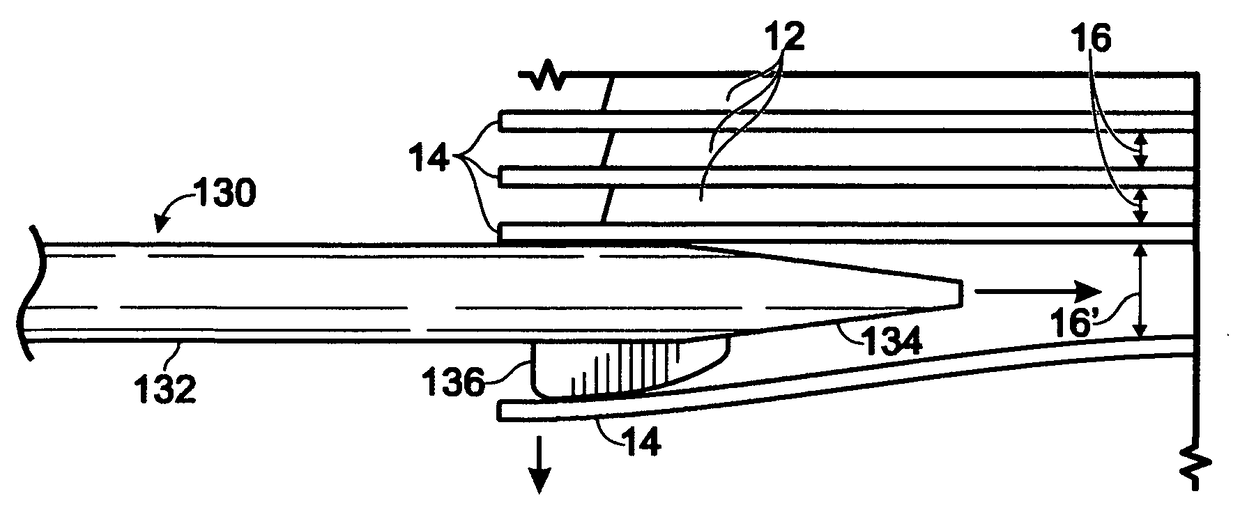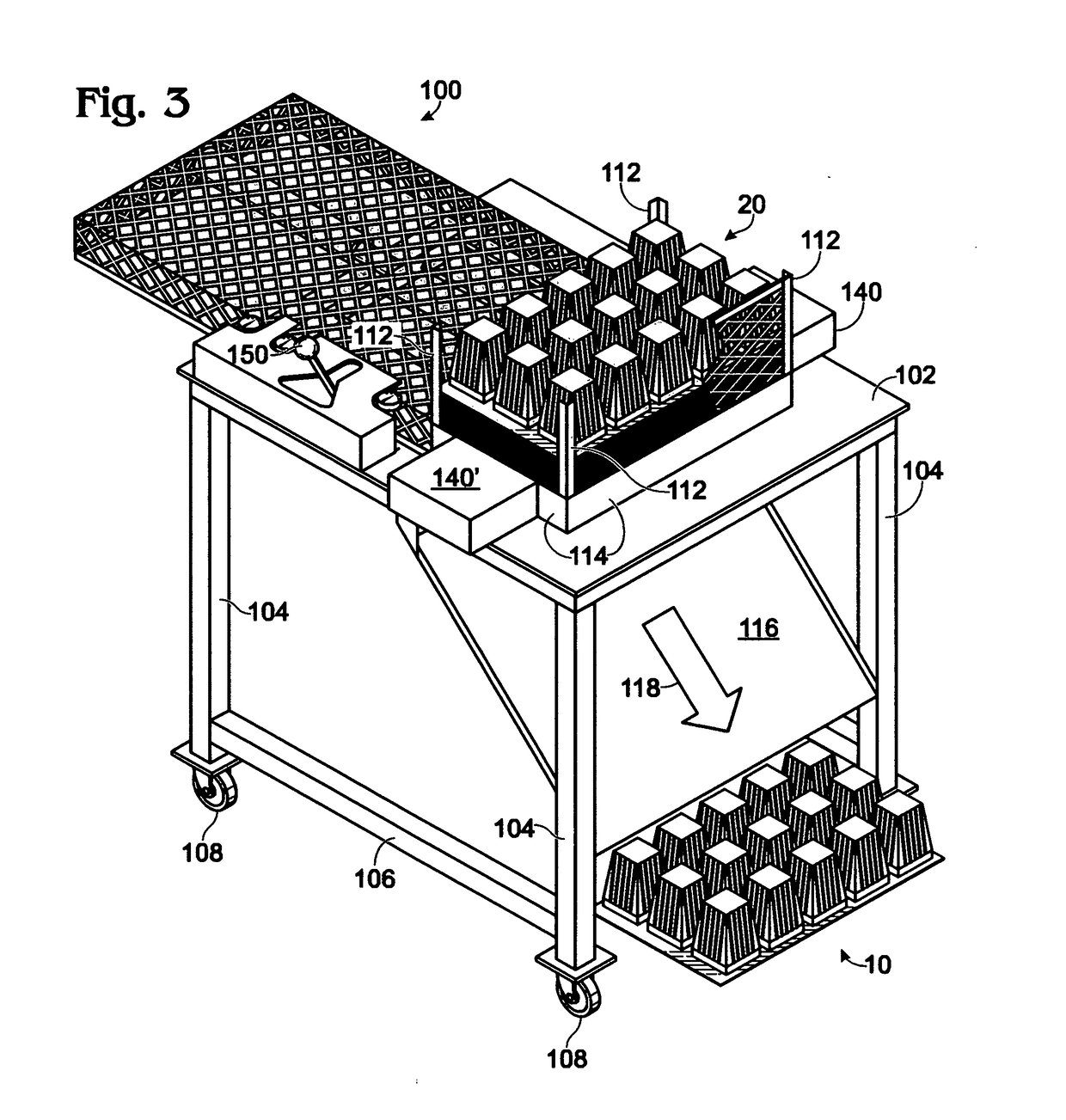Tray separator method and apparatus
a separator and trays technology, applied in the direction of transportation and packaging, de-stacking articles, etc., can solve the problems of up to 25% of the trays being damaged, the nested containers tend to be tightly compacted, and the person attempting to separate the trays is easy to damag
- Summary
- Abstract
- Description
- Claims
- Application Information
AI Technical Summary
Benefits of technology
Problems solved by technology
Method used
Image
Examples
Embodiment Construction
[0018]FIG. 1 shows a rectangular container tray 10 consisting of a plurality of interconnected containers 12 arranged in rows and columns. Tray 10 is formed by any suitable plastic forming process, such as injection molding. Each container 12 is connected to adjacent containers 12 at their upper edges by webs 14.
[0019]For purposes of illustration tray 10 is shown containing three rows of five containers, or five columns of three containers, for a total of fifteen containers per tray. However, the separator method and apparatus of the present invention may be used with container trays containing a different number of containers so long as they are arranged in rows and columns with space in between forming linear pathways.
[0020]As seen in FIG. 2, a plurality of container trays 10 are nested together to form a stack 20 for shipment to a customer. For purposes of illustration, stack 20 is shown as containing twenty-one nested container trays 10. Although the containers 12 of one tray ar...
PUM
 Login to view more
Login to view more Abstract
Description
Claims
Application Information
 Login to view more
Login to view more - R&D Engineer
- R&D Manager
- IP Professional
- Industry Leading Data Capabilities
- Powerful AI technology
- Patent DNA Extraction
Browse by: Latest US Patents, China's latest patents, Technical Efficacy Thesaurus, Application Domain, Technology Topic.
© 2024 PatSnap. All rights reserved.Legal|Privacy policy|Modern Slavery Act Transparency Statement|Sitemap



